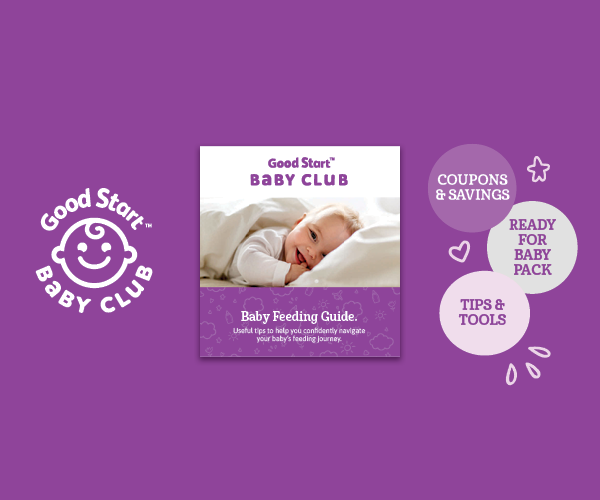Why choose Good Start®?
Good Start® is Pediatricians’ #1 choice for easiest formula on baby’s tummy.∆
Comfort Proteins®
Easy to digest*. Only Good Start formulas have Comfort Proteins®. They’re 100% whey proteins that have been partially broken down with your baby’s tiny tummy in mind – and they have been scientifically shown to help promote softer poop.**, ¹ Learn More.
Probiotics & DHA
Good Start® Plus contains probiotic B. lactis^ which is a good bacteria that contributes to baby’s healthy gut flora. It also has expert recommended levels of DHA², an Omega 3 fat that supports baby’s normal physical brain and eye development.
Immune Support
2’-FL is an oligosaccharide found in breast milkǁ and is shown to help support digestive health and the developing immune system.3-5
Trending Articles
∆ More Pediatricians trust Good Start® as the most well-tolerated routine infant formula than any other brand. Data on file. June 2024.
*Like all infant formulas.
**Compared to intact protein formulas.
^ Probiotics in powder format only.
ǁ Not derived from human milk.
¹ Czerkies L, et al. Int J Pediatr. 2018;2018:4969576.
² ADA/DC. J Am Diet Assoc. 2007;107:1599-1611.
³ Storm H, et al. Glob Pediatr Health. 2019;6:1-10.
⁴ Bode L, et al. Glycobiology. 2012;22(2):1147-1162.
⁵ Goehring K, et al. PLoS One. 2016;146(12):2559-2566.













